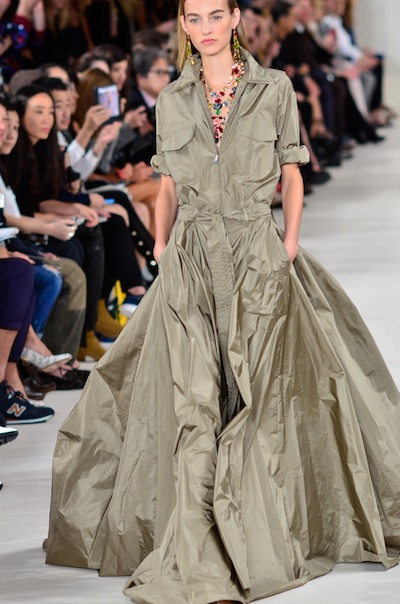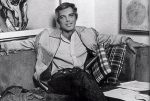Ralph Lauren in 1978. (photo by Edgar de Evia)
Born 79 years ago, in New York, to Frieda and Frank Lifshitz, immigrants from Belarus, Ralph Lifshitz, better known as Ralph Lauren, has become a universal household name.
The youngest of four siblings clothed in hand-me-downs, the fashion legend never imagined becoming a designer – he did, however, yearn to be the next Joe di Maggio or Cary Grant. His favourite pastimes were sports, listening to the radio, watching TV and movies. And it is from these influences that his dream to design clothing came.
At 16, Lifshitz switched to the name Lauren after experiencing years of ridicule. At the same time, he embraced and embellished his own sense of style, buying oversized and rugged clothing from the army surplus store because he liked how they made him feel, and had an aspect of originality. His preference for military-style clothing predated his draft to the American army, in which he served two years. It was in the army that his respect for the uniform further developed and he incorporated the style into many of his subsequent designs.
In the years that followed, Lauren began working by day for a buying company while studying at night. It was during this period that he had the idea of making ties from scraps, and making and selling his unconventional ties turned into a profitable side business.
While working for men’s fashion house Brooks Brothers, Lauren tried to get them to sell his ties, but to no avail. Moving on to work for tie manufacturer Beau Brummell, an upscale men’s brand, Lauren’s potential started to be realized, as he acquired a “drawer” in their showroom of the Empire State Building to sell his flamboyant ties. In 1967, Lauren started the label Polo, the name reflecting his love of sports, and his creations’ international and sophisticated vibe. Lauren sewed on each label, together with his new bride, Ricky. He also made all the deliveries himself, to the likes of Neiman Marcus and Bloomingdales. During the first year, Polo made $500,000. The young Jewish boy from the Bronx’s design career was on its way.
By 1968, Lauren was making his own suits, which were, once again, offbeat; not what his colleagues were wearing. Lauren believes that fashion is all about playfulness, expressing one’s individuality and not conforming to one look. He has held this belief through his many years in the industry, and it has no doubt provided the foundation of what he has built into a multibillion-dollar empire.

Lauren’s classic innovations include making women feel that wearing a tuxedo was sexier than a gown; turning tailored men’s shirts unisex; and transforming American folk art (patchwork) into fashionable sweaters, coats and dresses, borrowing from cowboys’ attire the rich colour of turquoise, fringed jackets and boots.
Lauren’s talents did not end at the design table. He used the platform of advertising unconventionally, working with real people, not models, in ads that covered multiple pages to tell a story through his clothing’s many different looks and fabrics. This creative approach was developed in part with photographer Bruce Weber.
Lauren has outfitted Wimbledon players, won the Coty Award for both women and men’s wear, opened the first freestanding store in Europe by an American designer, and established a home collection. Other highlights include being the costume designer for Woody Allen and Diane Keaton in the Oscar-winning movie Annie Hall, and creating a men’s and women’s fragrance in 1978 that is still emblematic. Upon receiving a lifetime achievement award in 1992, presented to him by actor Audrey Hepburn, he said, “I don’t design clothes, I design dreams.”
Ricky, Lauren’s wife of more than five decades, is one of his muses. Her elegant and natural style has been a continuous inspiration for him and it is her sense of self that he tried to emulate in his clothing designs. Together, the couple built the Ralph Lauren brand not only as a fashion domain but as a family business, operated with their two sons and daughter.
In addition to his material and creative successes are Lauren’s contributions to philanthropic causes. Among them, Lauren and cancer surgeon Dr. Harold P. Freeman founded the Ralph Lauren Centre for Cancer Care in Harlem, N.Y., in 2000, with the resources of the Polo Ralph Lauren Foundation and the Memorial Sloan Kettering Cancer Centre. The residence, care and support facility’s mission is “to fight health disparities in the community … [and] become a beacon for quality, dignity and accessibility in cancer care.”
Ariella Stein is a mother, wife and fashion maven. A Vancouverite, she has lived in both Turkey and Israel for the past 25 years.

